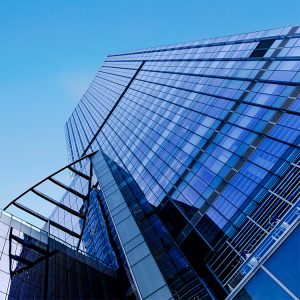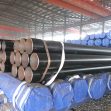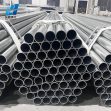Application of Visualization Technology in Curtain Wall Design
Architectural visual design is an important form of expression in the field of architectural design, which has a history of several centuries. Images are used to express the possible effects of a design before a building is built, since the designer has sketched the concept on paper. Since the 1990s, with the development and popularization of CAD, video has been added into the modern curtain wall design, from static picture rendering to architectural roaming animation. These innovative design methods have brought great convenience to communication. And visual, real-time representation of architectural design has a fundamental benefit: it provides clients with a new kind of presentation. It becomes the most intuitive and efficient way for architects to communicate with owners and other relevant parties about design concepts and design intentions.

Modern architecture design and visualization technology is refers to the fully digital virtual image technology, through the engineering design modeling, architectural renderings, animation, virtual reality and multimedia video form virtual rendering scenarios for the future, the visual effect of the design concept into a vivid, lifelike, abstract to concrete, create immersive feel. In the traditional architectural design process, the architect deliberates the rationality of the architectural scheme by drawing two-dimensional sketches and establishing three-dimensional models, which depends on the experience accumulated in long-term practice of types of curtain wall systems. However, due to different site environment and other factors, this subjective grasp may lack of accuracy. From geometric drawing to perspective expression to three-dimensional modeling rendering rendering, the expression of architecture has been developing to the direction of authenticity and intuition. The present architectural design is usually manifested in three ways: renderings, animations, and three-dimensional solid models. However, all of them have certain limitations. However, the traditional renderings and multimedia animations often deviate from the design itself, paying too much attention to the effect and performance while neglecting the expression of the design, deviating from reality in perspective, light and shadow and material, resulting in many completed solid buildings far from the initial curtain wall structure.
Moreover, the renderings only express the architecture from one aspect and one perspective, while the animation only completes the expression of the architecture from one path, so it is quite difficult to modify. However, the solid model is difficult to make, the cycle is long, and the revision cost is higher when there is an error. Obviously, architectural visual design can provide multi-angle and all-directional effect display, and video media can also realize the expression ability of multi-path real-time transformation, which can completely overcome the shortcomings of traditional renderings and multimedia animation, and become the ideal means of architectural effect display. The visual design of architecture enables ordinary people, even those who are not very professional, to connect the fragmented pictures and form a whole, so that all curtain wall suppliers can grasp the relationship between the architectural form and the surrounding environment more coherently, which is in line with the cognitive habit of human coherence and reduces the professional requirement for the interpretation of architectural effect.
Tel: +86 18202256900 Email: steel@fwssteel.com










